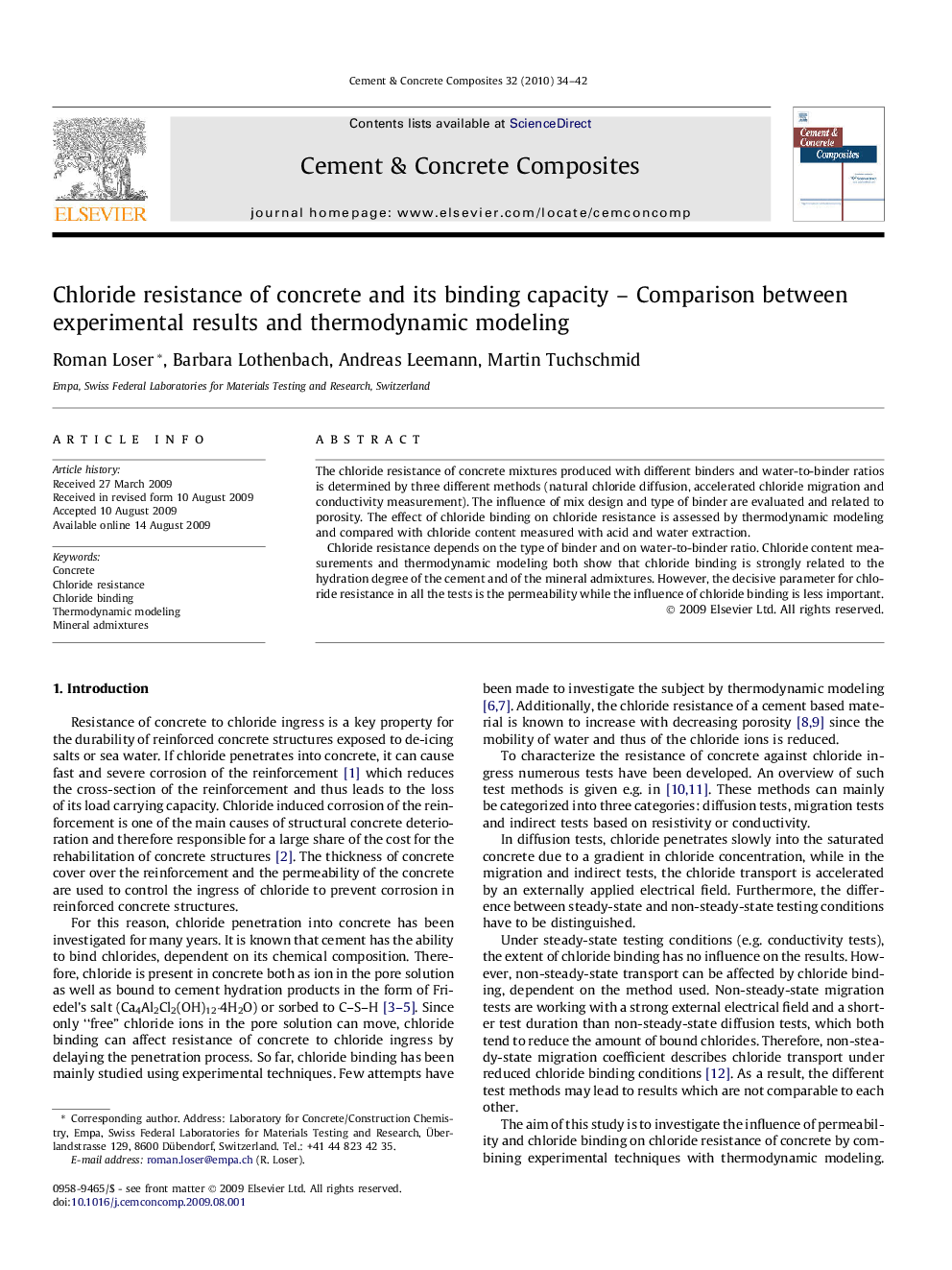| کد مقاله | کد نشریه | سال انتشار | مقاله انگلیسی | نسخه تمام متن |
|---|---|---|---|---|
| 1455403 | 989042 | 2010 | 9 صفحه PDF | دانلود رایگان |

The chloride resistance of concrete mixtures produced with different binders and water-to-binder ratios is determined by three different methods (natural chloride diffusion, accelerated chloride migration and conductivity measurement). The influence of mix design and type of binder are evaluated and related to porosity. The effect of chloride binding on chloride resistance is assessed by thermodynamic modeling and compared with chloride content measured with acid and water extraction.Chloride resistance depends on the type of binder and on water-to-binder ratio. Chloride content measurements and thermodynamic modeling both show that chloride binding is strongly related to the hydration degree of the cement and of the mineral admixtures. However, the decisive parameter for chloride resistance in all the tests is the permeability while the influence of chloride binding is less important.
Journal: Cement and Concrete Composites - Volume 32, Issue 1, January 2010, Pages 34–42